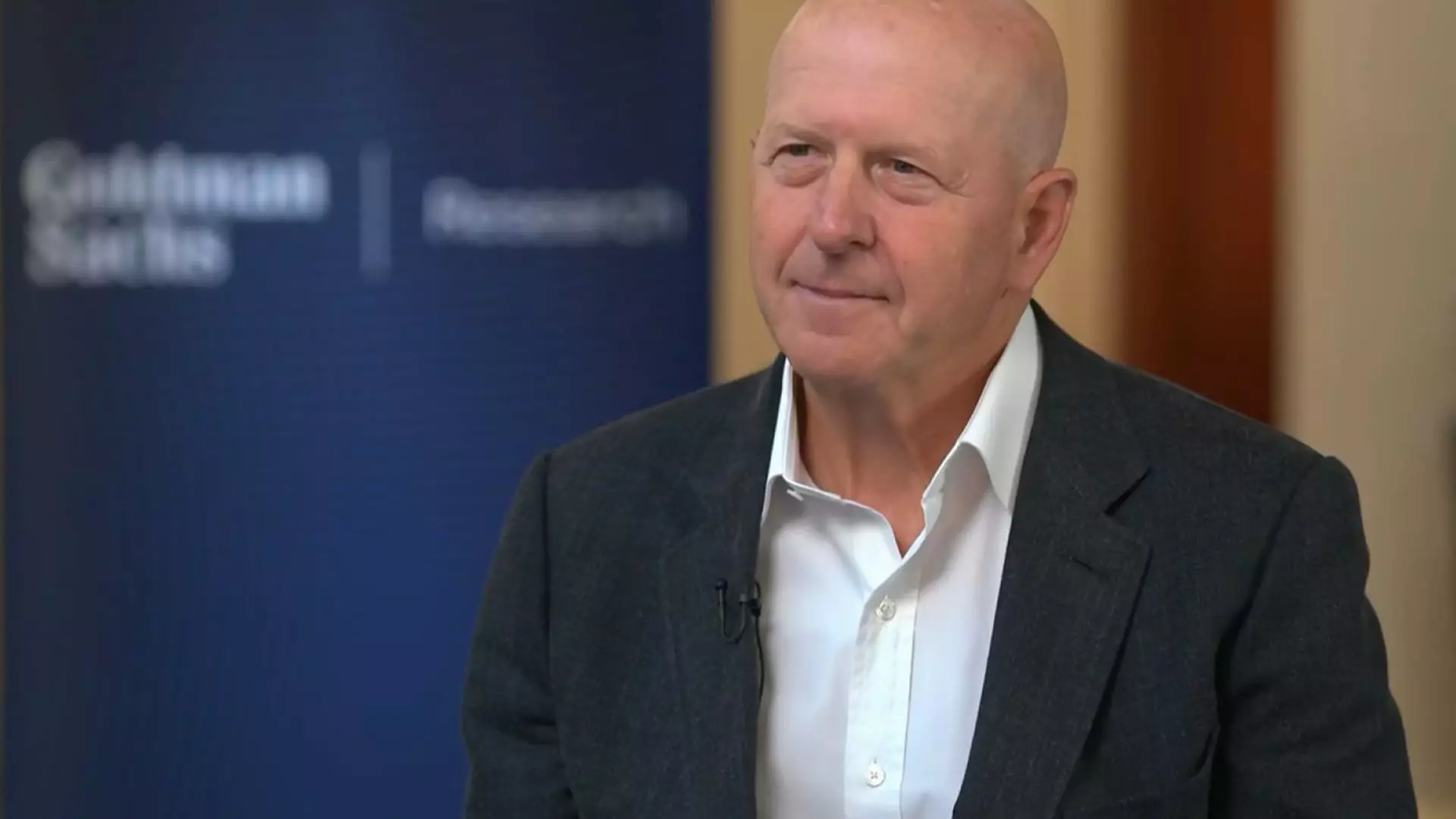In an age where unpredictability reigns supreme, Goldman Sachs has managed to post quarterly results that defy the conjectures of disillusioned analysts. Recently, the banking titan reported earnings of $14.12 per share, exceeding the expected $12.35. The revenue of $15.06 billion further overstepped estimates, raising eyebrows and prompting a closer examination of the strategies that led to this unexpected triumph amidst a stormy market.
Yet, let’s not overlook the underlying currents of this success. While a 15% increase in profit from the previous year is commendable, we must dissect the nuances surrounding its revenue growth. Goldman Sachs reached this number primarily due to an astonishing 27% rise in equity trading, a sector that performed astronomically better than anticipated, earning the firm nearly $540 million more than predictions indicated. Such performance typically necessitates a cautious celebration, especially when juxtaposed with declines in critical segments like wealth management, which fell 3% to $3.68 billion.
The Mirage of Stability
Sustained growth in any corporation is akin to a mirage in the desert; it might appear steady from a distance but often conceals a complex reality upon closer inspection. In Goldman’s case, its fixed income division fell short of expectations with a meager 2% rise in revenue and investment banking fees dipping 8%. Here lies the catch: these figures hint at an unsettling trend within the financial behemoth, indicating that its tentacles may not grasp as tightly on the broader economic landscape as they once did.
Moreover, Warren Buffett once cautioned about investing in businesses powered by “moats”—the protective barriers that shield a company’s profitability. If Goldman’s lucrative equities trading can be likened to a sturdy castle on a hill, then should we not question the integrity of its foundation? The pressure from weakened asset management and investment banking sectors raises pertinent questions regarding whether these successes are sustainable or merely circumstantial.
A Leadership Facing Uncertainty
As Goldman’s CEO David Solomon addressed these issues, his comments poignantly underscored the effects of external pressures including President Trump’s recent aggressions in trade negotiations. Solomon remarked, “While we are entering the second quarter with a markedly different operating environment… we remain confident in our ability to continue to support our clients.” This statement, reflective of both conviction and concern, strikes me as indicative of a leader steering through turbulent waters.
It’s illuminating to consider how external factors manifest in internal performances. With the specter of political discord looming, Solomon’s leadership must navigate not only the realm of finance but also an unpredictable geopolitical landscape. This interplay can significantly affect trading momentum and investment inflows. Should clients begin to reevaluate their risk tolerance in light of such uncertainties, how will Goldman adapt?
The Competitive Landscape: Rivals Rising
Goldman Sachs’ competitors, notably JPMorgan Chase and Morgan Stanley, have also reported stellar results driven by equity trading surges of 48% and 45% respectively. It is within this landscape of cutthroat performance that Goldman must establish its identity. Will it capitalize on this momentary equity trading spike, or will it falter back into the broader market malaise that characterizes its other divisions?
The comparative results of its rivals effectively shine a light on Goldman’s performance, prompting deeper inquiry into whether its victories this quarter are indicative of a fleeting moment of glory. The financial ecosystem is inherently aggressive, and resilience requires more than short-term gains; it necessitates robust, diversified growth.
The Quest for Sustained Growth
As investors and analysts delve deeper into Goldman’s financial results, the underlying question remains: how will Goldman sustain its momentum in turbulent waters? A single quarter cannot define the health of a financial institution. The pressures stemming from geopolitical tensions and internal weaknesses signal that Goldman must innovate and adapt.
In a world where each decision reverberates through markets, Goldman Sachs finds itself at a crossroads, presenting a complex scenario characterized by both exceptional performance and cautionary tales. The upcoming quarters will be critical in determining whether Goldman can stabilize its foundations while navigating the stormy seas of uncertainty that lie ahead.


Leave a Reply